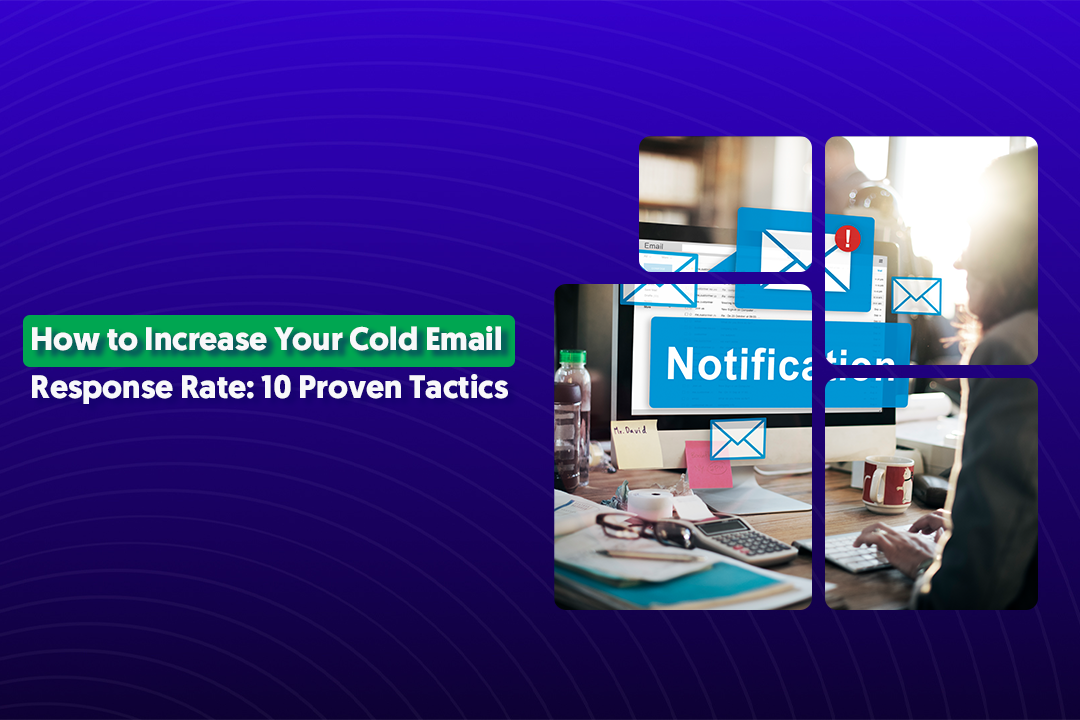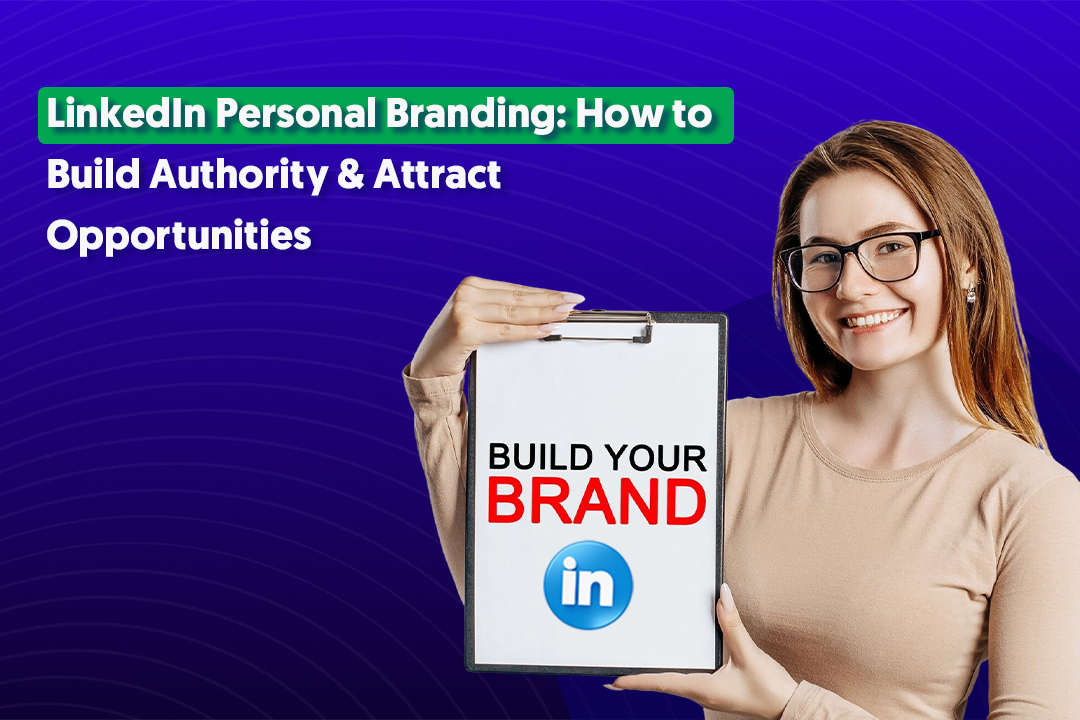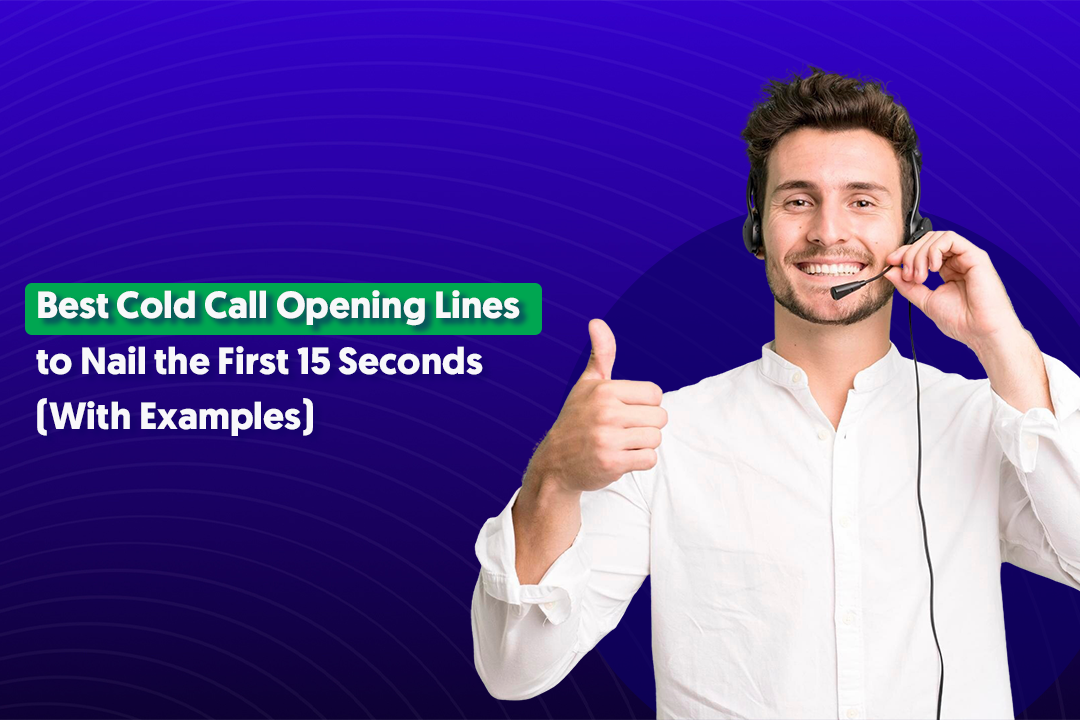Table of Content
Key Takeaways
- Clarity > cleverness — a headline that clearly states who you help + what you do outperforms vague job titles.
- Use formulas/templates (Problem & Solution, Social Proof, “Do X, Get Y” etc.) — proven structures make your headline more compelling.
- Social proof and big numbers earn instant credibility — clients, results, or notable companies get attention.
- Your headline must address your audience’s pain or desired outcome to connect quickly.
- Bold or “off-rails” headlines can work — especially if you can back up the personality and have enough visibility or content to support them.
- Always test variations; what works for one niche or profile might not for another.
100% of people you send a connection request to will see your LinkedIn headline and most will make a split-second decision to engage with you. Not to mention everyone who reads your posts.
The good news for you is most headlines are vague and boring—which look like this:
- Strategic Digital Transformation Consulting Partner
- Account Executive @ ACME Inc. | Supply Chain Optimization Solutions
Those examples scream ‘I’m selling something’ and use so much fluffy verbiage that prospects have no clue how you can help them.
So to stand out amongst a sea of competitors and get leads, you’ll just need a clear, compelling and credible tag-line.
After reading this post, you’ll be able to create a winning headline modeled off the exact templates that top salespeople use.
22 of The Best Headlines on LinkedIn
We’ve broken down all the top headlines into 7 simple formulas, backed by real examples of each formula perfectly executed on a profile.
Formula 1 - The Big Problem & Solution
A great way to grab prospects’ attention with your LinkedIn headline is to use it to address a problem or pain point they’re dealing with, and then hint at a solution.
This is what The Big Problem & Solution headline does. Here’s how it looks:
Not P? Read this profile.
Where P is the problem you solve.
This headline works best if you’re certain that most of your prospects suffer from the same problem.
Here’s how people are using it:
1) Josh Braun

Josh knows his audience so well, that he’s sure they’re facing a few common pain points. Notice how he uses insider language to describe those problems by choosing words his prospects use. He turns those 3 pain points into questions, then hooks them with a CTA.
2) Chance H. King

Eden Chai is the co-founder of Generation Marketing, a real estate marketing agency that provides a variety of different services, including reputation management.
He paints a picture with a theoretical question that unearths a problem. If you’re a Dentist with under 3 stars, you’re compelling to contact Chance after realizing the answer to his question is rhetorical.
3) Tim Kerr

See how Tim uses adverbs to add strength and specificity to his question. If he left it as “struggling to access footage?”, that wouldn’t be a big enough problem to spark curiosity.
4) Albert Villaviza

Albert is speaking directly to one niche—subscription based companies. That allows him to use problems unique to that company type, namely, churn, subscribers and retention rate. He’s established himself as an insider and an expert with a compelling hook that he may be able to solve one of the top problems SaaS firms face, churn!
Formula 2 - The Irresistible Pitch
A direct, one-liner pitch is most effective when you’re offering something new to the market because your value prop is unique.
It looks like this:
Do X and Y happens.
Here are a couple of examples:
5) Tristan Turner

This is the perfect example of the Do X, Get Y formula. It’s crystal clear exactly what he does and the benefit I’d receive from doing so.
6) Michael Zampiglia

While this doesn’t follow the Do X, Get Y formula, it is a pitch because he’s asking for something while clearly stating what he sells. But instead of the overused, boring headline: “Marketing Specialist for Solar Companies”, Michael knows he needs to break through a sea of same. He creatively turns social proof into a call to action.
Formula 3 - The Equalizer
Probably the most common type of headline you’ll see on LinkedIn, The Equalizer lets people know what you do quickly and effectively.
It looks like this:
{Job Title} for {Your Niche}
Apart from giving people a quick overview of what you’re about, this headline is also a great way to disguise a sales title.
Here’s how it’s used on LinkedIn:
7) Crystal Kim

Crystal may ultimately be a sales rep, but her headline positions her as a partner, which is commonly perceived as a win-win in business. If you’re a sales rep, try her formula: Director of {Niche} Partnerships at {your Company}.
8) Masaki Oishi

While Dr. Oishi is selling a real estate investment opportunity to Doctors, he leads with something that puts him on the same level as his prospects — the fact that he’s a Neurosurgeon. Bonus points that his profile photo proves it.
Formula 4 - Massive Social Proof
If you’ve achieved great results in your industry, you can use your LinkedIn headline to let everyone know about it.
This is what the Massive Social Proof headline is all about - using results and social proof to grab prospects’ attention.
Here’s how it looks:
{Big #s or Big Client names or Big Results}
This type of headline works best for highly experienced if you have something that your prospects would find super credible.
Here are a few examples of the Massive Social Proof headline in action.
9) Benjamin Inman

Benjamin leads with huge numbers right away. In real estate, managing $193MM across 2,323 in apartments is impressive and well-respected by anyone in the space.
10) Kevin Dorsey

Awards and recognitions can be great for credibility. I tend to shy away from this type of social proof because generally prospects don’t recognize the award-giver, and some top lists can be pay-to-play or loose in terms of standards. However, KD is definitely legit, as are his awards.
11) Greg Gillman

Once again, huge numbers work extremely well, especially if you’re targeting mid-market or enterprise companies. Greg could actually go a step further and put an odd, exact number in there, such as $4.3B—which is more believable than round numbers because it appears more likely and calculated.
Formula 5 - The Big Shot
If you work for a giant, widely-recognized company, put that in your headline.
It looks like this:
{Title} at {Company} | Interesting personalizer
This type of headline works best if you have a senior title at a widely-known company. We’ve also seen it work in a variety of other cases, so don’t let not having a senior title discourage you from using The Big Shot.
12) Macy Manning

Goldman Sachs is one of the top 23 investment banking firms and is well-respected. When a prospect sees you work there, they know you’re legit.
13) Mayur Gupta

Although Mayur’s current company isn’t Fortune 1,000 status, he flexes credibility from past companies. If you work for a small company, but you come from large enterprises, drop an ex in front of your old employer and add it.
Notice that he includes personal information outside of work. That makes Mayur look like a human, and appear more interesting. Works great to break-up the stiff professional feel most people go with on LinkedIn.
14) Markesa Phelps

Simple, but effective. Markesa is a recruiter for a Fortune 50 company, and she doesn’t need to say anything more.
Formula 6 - I help {target audience} achieve {desired outcome} through {X}
This formula is the absolute most clear way of presenting your offer.
But I’m warning you now, this headline template is way overused on LinkedIn, so people know you’re selling something. If you’re sending cold connection requests, this headline results in low acceptance rates from our experience.
Use this formula if you have a ton of followers and content is a big part of your strategy. It works great for inbound prospects who come to your profile, before you check their’s out.
15) Gav Gillibrand

This is a fantastic headline because it’s specific. How many pounds? 20. How long will it take me? 12 weeks. It even deploys an advanced marketing tactic of calling out hidden objections with weight loss programs—diets suck and running sucks. Add a {without common objection} to your one-liner if what you sell comes with negative, preconceived notions.
16) Justin Welsh

Whereas most salespeople just say “Executive Coach for SaaS Companies”, Justin gets specific. He hits on a dream number that most SaaS companies want to hit, $50M ARR. Only use that tactic if you can back it up, in which case, Justin can because he’s hit that metric before as VP of Sales.
17) Dan Sanchez

Sometimes the best headlines are short and sweet.
18) Amy Volas

Amy combines a few formulas here. She starts with a pitch, but knows the startup-sales recruiting space is competitive, so she packs on some serious social proof.
Formula 7: The Off-The-Rails Headline
If you want to stand out from the rest, go with a radical headline that’s way outside the norm.
19) Eric Yuan

If your mission statement is big, positive and well-intentioned, copy Eric’s. Normally this headline is way too vague. But, it makes people feel good when they read it. And people like to feel good. The word ‘happiness’ also pulls Eric away from the greedy-scrooge-CEO and positions him as a CEO who actually has good intentions.
20) Jennifer Welsh

Jennifer’s edgy headline gives her personality. Addicts are taboo, but a stock market addict sounds like an expert who I would want running my portfolio. She transitions well into a pitch.
21) Michael Skubic

Have any cool hobbies? If so, use them. Again, it’s outside the norm and makes you seem personable.
22) Cindy Gallop

Had to end with a bang, no pun intended. This is 10/10 on the boldness scale, but Cindy has hundreds of thousands of followers, so clearly it works.
What Makes a Great LinkedIn Headline?
Your LinkedIn headline is one of the first things prospects notice—and it plays a major role in whether they click through to your profile. It’s more than just a job title; it’s your personal elevator pitch, condensed into 220 characters.
Here are a few quick facts about strong LinkedIn headlines:
- Clarity beats cleverness – People should instantly understand who you are and what you do.
- Keywords matter – Adding industry-relevant terms helps your profile appear in LinkedIn and Google searches.
- Value-driven – A headline that highlights how you solve problems or drive results is far more engaging than just listing your position.
- Credibility boosters work – Numbers, achievements, and niche expertise make you stand out in a crowded feed.
- Audience-focused – Instead of centering on you, frame your headline around how you can help your target clients.
A great headline balances professionalism with personality—it signals both competence and approachability, setting the stage for productive sales conversations.
Do’s & Don’ts for LinkedIn Headline
Your headline is prime real estate on LinkedIn—it needs to capture attention, build trust, and show value in just a few words. Follow these simple rules to make sure yours hits the mark:
✅ Do’s
- Use numbers for impact – Show measurable results (e.g., “Helping SaaS founders 3x pipeline in 90 days”).
- Sprinkle in social proof – Mention awards, featured publications, or recognized credentials if relevant.
- Keep keywords front and center – Include industry and role-specific terms to boost discoverability.
- Use emojis sparingly – One or two can add personality or break up text (e.g., 📈, 🤝), but don’t overdo it.
- Focus on value, not job title alone – Show how you help your audience instead of just stating “Account Executive at X Company.”
❌ Don’ts
- Avoid overused buzzwords – Words like “guru,” “ninja,” or “rockstar” dilute credibility.
- Don’t stuff in too many emojis – It looks unprofessional and distracts from your message.
- Skip vague claims – “Helping businesses grow” is too broad; get specific about the outcome or niche.
- Don’t ignore your audience – Headlines that only highlight your role without addressing client needs miss the opportunity to connect.
- Avoid fluff and filler – Every word counts—make sure each adds value.
A polished headline is about clarity, credibility, and connection, not gimmicks.
Craft the Perfect LinkedIn Headline
Even with best practices, there’s no one-size-fits-all headline. The key is to test and refine until you find the version that attracts the right audience. You can simply A/B test.
How to Run a Headline A/B Test
- Pick two variations – Create two strong headline options (e.g., one keyword-heavy, one results-focused).
- Set your test period – Run each headline for 2–4 weeks to gather enough data.
- Track the right metrics – Monitor how each headline impacts:
- Profile views – Are more people clicking to learn about you?
- Search appearances – Is your profile showing up more often in LinkedIn search results?
- Connection acceptance rate – Are more prospects saying “yes” when you send invites?
- Message replies – Is your outreach getting better response rates?
- Compare results – At the end of the test, see which version drives more engagement and opportunities.
Pro Tip
Keep all other LinkedIn profile elements (banner, About section, featured content) consistent while testing. That way, you know changes in performance are linked to your headline.
A/B testing takes the guesswork out of writing LinkedIn headlines—it helps you move from “good enough” to “high-performing” with real data.
Conclusion
Your LinkedIn headline is more than just text under your name—it’s a powerful first impression that can win or lose opportunities. The right headline grabs attention, communicates value, and positions you as the go-to professional in your niche.
With the examples, templates, and testing strategies shared above, you’re now equipped to craft a headline that not only looks good but also drives measurable sales results.
At Cleverly, we’ve helped clients generate 224,700+ leads, $51.2M in revenue, and $312M in sales pipeline through our proven LinkedIn lead generation services.
And for those who want to maximize results even further, we also offer LinkedIn content writing services—an add-on that ensures your profile posts, thought leadership content, and messaging work hand-in-hand with your outreach to attract and convert more clients.
Ready to turn profile views into warm conversations and closed deals?

Frequently Asked Questions
Frequently Asked Questions
1. How long should I wait before changing my LinkedIn headline?
Run your headline for about 2-4 weeks so you gather enough data (profile views, search appearances, connection rate, message replies). Then compare results to decide whether to keep or tweak.
2. How many characters can LinkedIn headlines have? And what’s ideal?
LinkedIn allows up to 220 characters for headlines. Ideally, aim to use enough to communicate value + credibility + keywords, but don’t stretch so far that you lose clarity or get cut off in certain views.
3. Should I use buzzwords like “guru”, “ninja”, “rockstar”?
Generally no — they tend to sound generic or overused, which dilutes trust. Better to use concrete, specific claims or results.
4. Is social proof always necessary?
Not always, but if you have something credible to show (big clients, results, numbers, awards), it dramatically boosts your headline’s effectiveness. If not, focus more on benefits + problems you solve.
5. Can I use emojis in my headline?
Yes — sparingly. One or two emojis can break up text or add personality, but too many become distracting or unprofessional.





